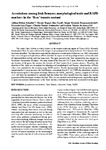Use este identificador para citar ou linkar para este item:
http://www.alice.cnptia.embrapa.br/alice/handle/doc/487446Registro completo de metadados
| Campo DC | Valor | Idioma |
|---|---|---|
| dc.contributor.author | SCHUELTER, A. R. | pt_BR |
| dc.contributor.author | CASALI, V. W. D. | pt_BR |
| dc.contributor.author | BROMMONSCHENKEL, S. H. | pt_BR |
| dc.contributor.author | FINGER, F. L. | pt_BR |
| dc.contributor.author | GUIMARAES, C. T. | pt_BR |
| dc.contributor.author | AMARAL JÚNIOR, A. T. do | pt_BR |
| dc.date.accessioned | 2011-04-10T11:11:11Z | pt_BR |
| dc.date.available | 2011-04-10T11:11:11Z | pt_BR |
| dc.date.created | 2003-12-30 | pt_BR |
| dc.date.issued | 2003 | pt_BR |
| dc.identifier.citation | Crop Breeding and Applied Biotechnology, Londrina, v. 3, n. 1, p. 11-17, 2003. | pt_BR |
| dc.identifier.uri | http://www.alice.cnptia.embrapa.br/alice/handle/doc/487446 | pt_BR |
| dc.description | A cultivar Santa Clara é bastante difundida entre os produtores de tomate da região de Viçosa (MG). Recentemente, foram identificadas plantas de tomate da mesma cultivar com modificações em caracteres morfológicos e de pós-colheita de frutos. Pelo estudo de herança e teste de alelismo realizados por Schuelter et al. (2002), determinou-se que um gene recessivo com efeitos pleiotrópicos modifica a expressão dos caracteres morfológicos, como a cor de estigma e de frutos, bem como a ocorrência de senescência foliar precoce. O gene, presente no mutante firme foi mapeado na região do cromossomo 10 onde se encontra o gene lutescent-2 (1-2). No entanto, os questionamentos quanto a identificação e localização de genes que promovem o aumento da firmeza de frutos do mutante 'firme' permanecem sem uma elucidação adequada. Assim, o presente trabalho teve como objetivo estudar a herança dos caracteres morfológicos e da firmeza de frutos modificados pela mutação, empregando-se a técnica de marcadores moleculares RAPD. Os resultados demonstraram que a região genômica do gene 1-2 promove aumento da firmeza de frutos, sendo explicados de 6,27 a 25,09 % da variação fenotípica nos diferentes períodos de avaliação da firmeza. Já os marcadores AQ16747 e AS8622' mapeados a 11,67 e 21,67 eM da mutação firme, explicaram tanto menor proporção da variação fenotípica quanto mais distantes estavam localizados dessa região. Assim, conclui-se que a região flanqueando o gene 1-2 promove também o aumento na firmeza de frutos no mutante 'firme', uma característica que nunca havia sido associada a esse gene. The Santa Clara Cultivar is widely known in the tomato-producing region of Viçosa (MG). Recently, tomato plants from the same cultivar with changes in morphological traits and post-harvest fruit characteristics have been identified. The inheritance study and the allelism test carried out by Schuelter et aI. (2002) determined that a recessive gene with pleiotropic effects modified the expression of morphological traits, such as the color of stigma and fruits and the early leaf senescence. This gene, present in the 'firm' mutant (frm), was mapped on the tomato chromosome 10 region - the same region of the lutescent-2 (l-2) gene. However, the identification and location of the genes that increase the firmness of 'firm' mutant fruits remain unknown. Therefore, the objective of this study was to analyze the inheritance of morphological and firmness characteristics of fruits which were modified by the mutation using RAPD markers. Results demonstrated that the genomic region comprising the 1-2 gene increases the fruit firmness, explaining from 6.27 to 25.09% the phenotypic variation for this trait along the 15 day-period of storage. However, the AQ16747and AS8622 markers, mapped at 11.67 and 21.67 cM from the mutation frm, indicated that the further they were located from this region, the smaller proportion of the phenotypic variation they had. Thus, we can conclude that that the genornic region flanking the 1-2 gene also increases fruit firmness in the 'firm' mutant, a trait that has never been associated with this gene. | pt_BR |
| dc.language.iso | eng | eng |
| dc.rights | openAccess | eng |
| dc.title | Associations among fruit firmness, morphological traits and RAPD markers in the firm tomato mutant. | pt_BR |
| dc.type | Artigo de periódico | pt_BR |
| dc.date.updated | 2018-06-05T11:11:11Z | pt_BR |
| dc.subject.thesagro | Marcador Molecular | pt_BR |
| dc.subject.thesagro | Lycopersicon Esculentum | pt_BR |
| riaa.ainfo.id | 487446 | pt_BR |
| riaa.ainfo.lastupdate | 2018-06-05 -03:00:00 | pt_BR |
| dc.contributor.institution | CLAUDIA TEIXEIRA GUIMARAES, CNPMS. | pt_BR |
| Aparece nas coleções: | Artigo em periódico indexado (CNPMS)  | |
Arquivos associados a este item:
| Arquivo | Descrição | Tamanho | Formato | |
|---|---|---|---|---|
| Associationsamong.pdf | 190,11 kB | Adobe PDF |  Visualizar/Abrir |









